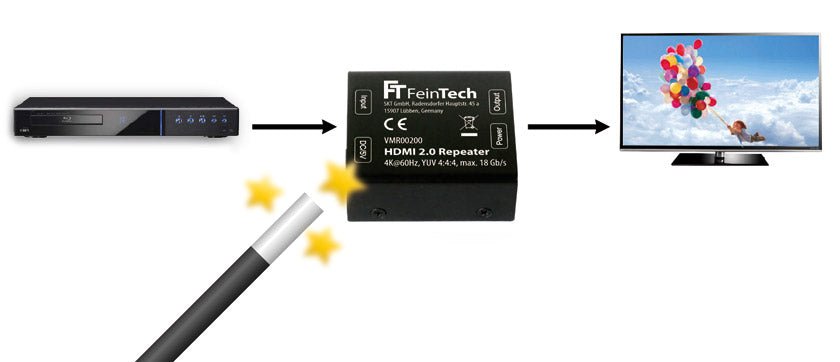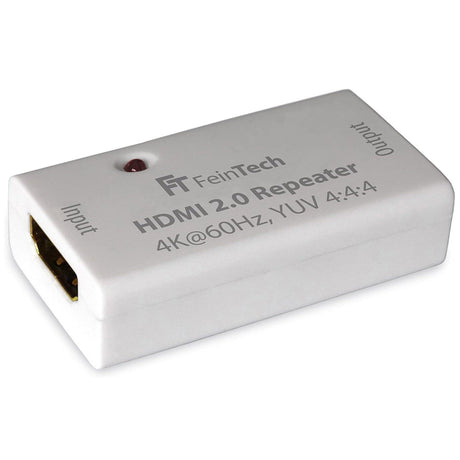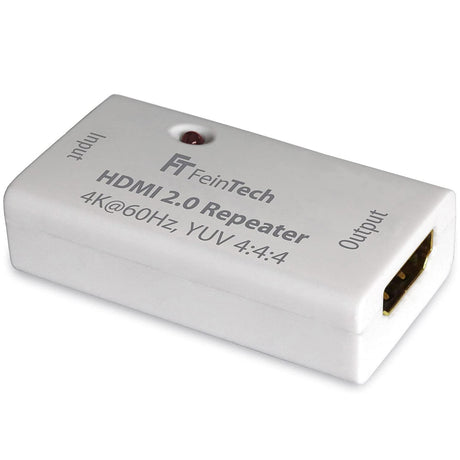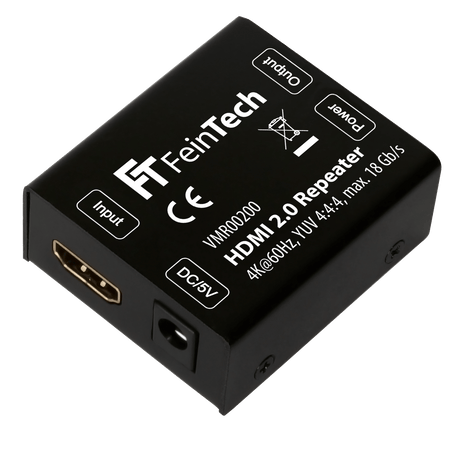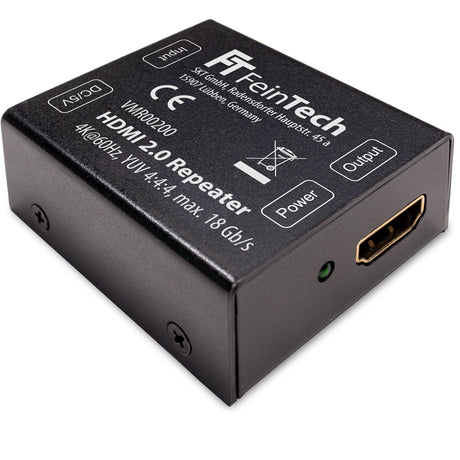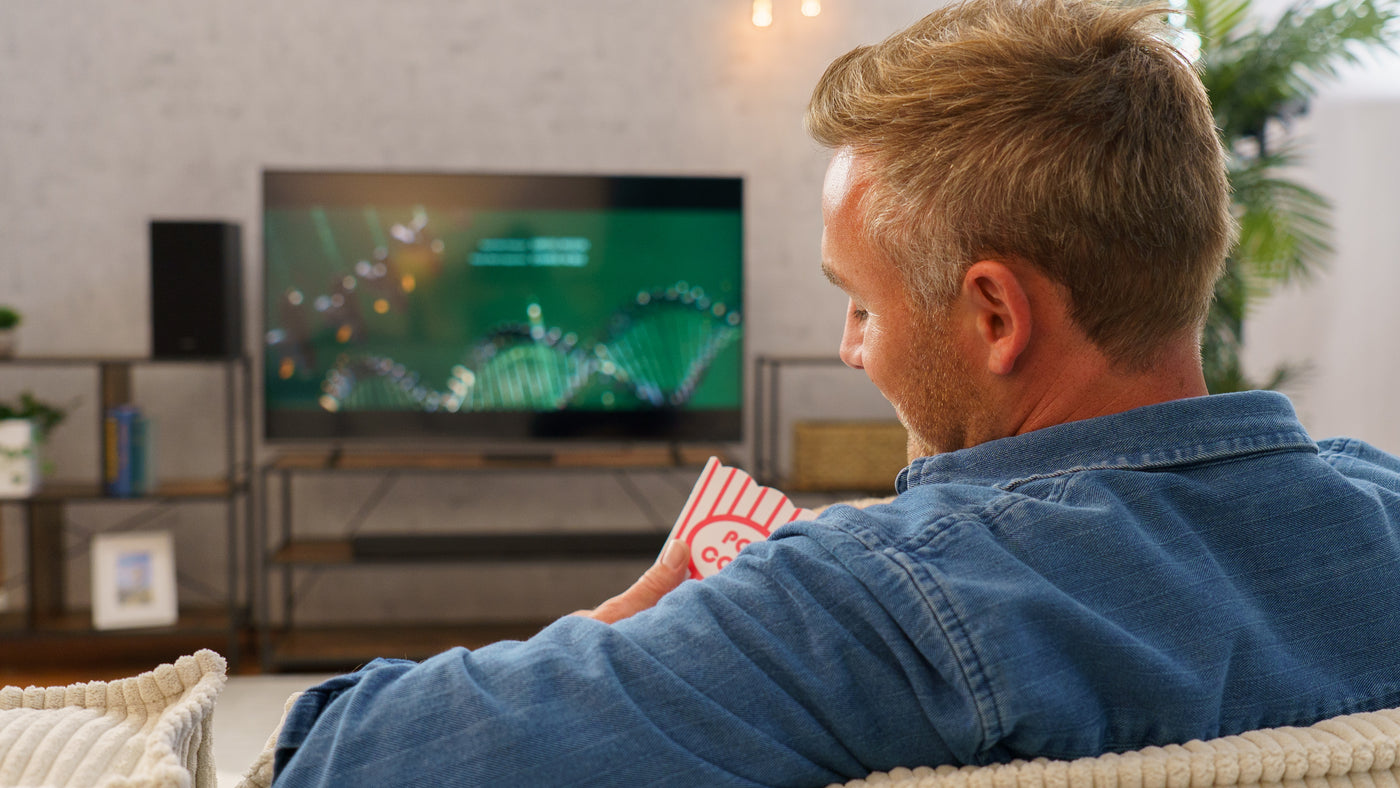Why use HDMI repeaters with longer cables?
The picture and sound signal is transmitted uncompressed via the HDMI. The bandwidth requirement for such a digital video signal is of course immense and increases in proportion to the resolution and color depth of the image. With HDMI 2.0 it is a maximum of 18 Gbit/s with 4K resolution and HDR, with Full-HD only approx. 2 Gbit/s. The biggest bottleneck in practice are the HDMI cables. The limits are revealed here over long distances and high data rates. What still works perfectly at 5 m can no longer deliver a signal that the television can display if it is extended. An HDMI repeater can help here, but it is not a panacea.
Digital = only 0 or 1?
Instead of clear 0's and 1's, the signal's voltage drifts a range of values, many of which are closer to halfway than to 0 or 1. The signal creates its own interference in the form of return loss. There may be crosstalk/interference with the 3 data channels in the HDMI cable. The HDMI signal can "smear" due to capacitance between individual wires and small differences in electrical lengths. Transitions from 0 to 1 and vice versa can blur. What was sent out as a relatively clean and simple signal that toggles between two discrete values becomes a signal that can no longer be read correctly.

The signal quality of the digital data transmission can be assessed with an eye diagram. The graphical representation is created by overlaying several measurements of the same signal at different points in time. A high voltage level corresponds to 1, a low to 0. The upper diagram shows a good enough signal. The "eye" in the middle is still clearly visible. The diagram below shows a very noisy signal. A repeater or amplifier can increase the voltage difference between 0 and 1. But the noise remains.
The resulting image and sound quality, on the other hand, is hardly affected by the cable. Digital transmission means either no picture or a perfect picture. Only in rare cases is the signal quality such that the error correction of the display can no longer restore all pixels. The result is then white pixels in the image or missing lines.
What Makes a Good HDMI Cable?
A good HDMI cable for long distances should be as thick as possible. The diameter of each wire is often given in AWG ( American Wire Gauge , code system for the diameter of wires). Thin cables are not recommended for longer distances. Thin cables only have a diameter of 6-7.5 mm (AWG30) or 7-8.5 mm (AWG28). The individual conductors inside the cable are only 0.25 mm in diameter. This is very sensitive and the damping is quite high. AWG26 with 8-9.5 mm is well suited for medium distances. AWG24 with an approximate outside diameter of 9-10.5 mm is best. On the one hand, the individual inner conductors then have a larger cross-section and less electrical resistance. On the other hand, one can hope for better shielding of the individual inner conductors. With certified Premium High Speed or Ultra HighSpeed HDMI cables, a test is carried out to determine whether the cable transmits the maximum advertised data rate correctly. Most of the time, series production keeps this promise. Therefore, we can recommend such cables despite the higher price caused by the certification. "HDMI 2.1" cable, on the other hand, is an illegal product designation .

Another problem with long cable lengths can arise when transmitting the Display Data Channel (DCC). To put it simply, the display tells the source device which resolutions, color spaces, sound formats and copy protection are supported. The DDC signal can be so distorted by the capacitance and attenuation of the HDMI cable that communication and authentication between the HDCP transmitter (HDMI source device) and receiver (display) no longer function correctly. Picture interference or dropouts can then occur.
How the repeater works:
The HDMI repeater increases the signal level and thus counteracts the attenuation caused by the cable routes. The signal level is raised so that the TV receives the required level. The HDMI signal is equalized: the higher frequencies, which are more strongly attenuated by the cable route, are amplified more than the lower ones. The repeater is powered by the 5 V voltage from the HDMI source device, which is also used to operate the DDC channel. This is called remote feeding. There are HDMI devices that do not supply enough power for this. In these cases, the VMR00200 Repeater can be connected to a voltage source with a USB socket using the adapter cable supplied. You can also solve a problem with a voltage drop on the HDMI cable by connecting the USB adapter cable from the VMR00200 to a USB socket (charging power supply unit or device socket). Then the repeater is supplied with it.

Where is the HDMI Repeater used?
The position of the repeater is ideal, after about 2/3 of the total distance. So rather at the end of the signal path, towards the TV / projector. With a distance of 15 m, the structure should be source > 10 m cable > repeater > 5 m cable > display.
The HDMI repeater can also be used with an AV receiver or HDMI switch/splitter in between. The following must be observed here: Splitters/switches must be supplied via a power pack. Simultaneous remote feeding (i.e. operation without a power pack) from the repeater and HDMI component overloads the source device. Double amplification degrades the signal significantly, so AV receivers and HDMI splitters/switches should not provide amplification. The same applies to all "active" HDMI cables, eg with Redmere or Spectra7 technology, or fiber optic hybrid cables.
If you have problems with high data rates or Ultra HD with HDR, check the following points:
- Is the display HDCP 2.2 capable and does it support the HDR format from the source device (HDR10, Dolby Vision, HLG)?
- Do all components such as HDMI splitters/switches and AV receivers support HDCP 2.2 copy protection?
- Has an HDR-capable HDMI 2.0 connection been selected? Please check whether the HDMI socket used on the television supports HDCP 2.2 or HDMI 2.0 - often only one of several sockets can do this.
- Is the HDR mode switched on on both devices (eg on LG televisions it means “Ultra HD Deep Color”, on Samsung it means “HDMI UHD Color”)?
- If an AVR (audio video receiver) is used, it should have HDMI 2.0 and allow the signal to pass through unchanged.
- It is best to use a short HDMI cable to make sure that the transmission works in principle.
If the HDMI Repeater does not bring the desired result with a specific device:
The signal quality of the source devices can vary. In any case, the repeater amplifies the signal and raises the level. However, if the output signal from the source device is not clean, the noise will also be amplified. As a result, the signal quality deteriorates. The result also depends on the HDMI chipsets in the receiver/television. There are models that have an equalizer function and are therefore better able to cope with sloping signals. There is something similar for the HDMI source device (pre-equalization, pre-emphasis). So it can be explained why one device does not deliver an image while all the others work.
Unfortunately, the HDMI repeater cannot do magic. But in many cases the use of long HDMI connections is made possible. An alternative to this is the use of converters that convert the HDMI signal for transmission. Here we offer transmission via glass fiber (fiber). A distance of 100 m can easily be bridged with such a fiber optic cable. HDMI can also be transmitted via CAT5e/6 network cable if the appropriate converter is used.
Fiber Optic Hybrid HDMI Cable
If you need new or longer cables anyway, you should take a look at our fiber optic hybrid cables. These active HDMI cables are available in lengths from 5m to 30m. However, you should not use these cables with a repeater.

